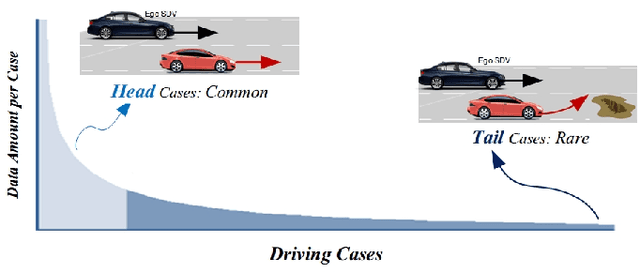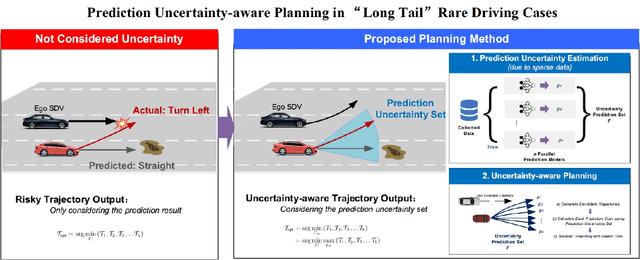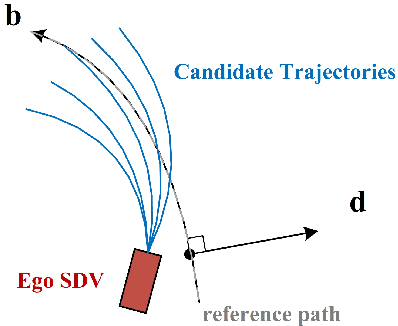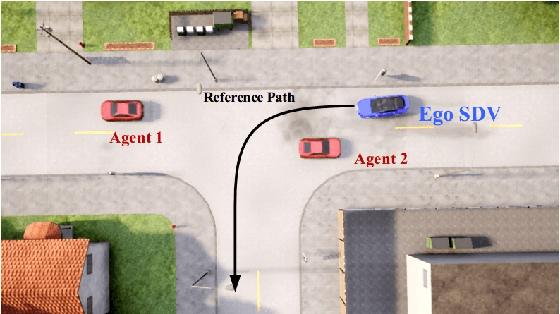Long-Tail Prediction Uncertainty Aware Trajectory Planning for Self-driving Vehicles
Paper and Code
Jul 02, 2022



A typical trajectory planner of autonomous driving usually relies on predicting the future behavior of surrounding obstacles. In recent years, prediction models based on deep learning have been widely used due to their impressive performance. However, recent studies have shown that deep learning models trained on a dataset following a long-tailed driving scenario distribution will suffer from large prediction errors in the "tails," which might lead to failures of the planner. To this end, this work defines a notion of prediction model uncertainty to quantify high errors due to sparse data. Moreover, this work proposes a trajectory planner to consider such prediction uncertainty for safer performance. Firstly, the prediction model's uncertainty due to insufficient training data is estimated by an ensemble network structure. Then a trajectory planner is designed to consider the worst-case arising from prediction uncertainty. The results show that the proposed method can improve the safety of trajectory planning under the prediction uncertainty caused by insufficient data. At the same time, with sufficient data, the framework will not lead to overly conservative results. This technology helps to improve the safety and reliability of autonomous vehicles under the long-tail data distribution of the real world.
 Add to Chrome
Add to Chrome Add to Firefox
Add to Firefox Add to Edge
Add to Edge